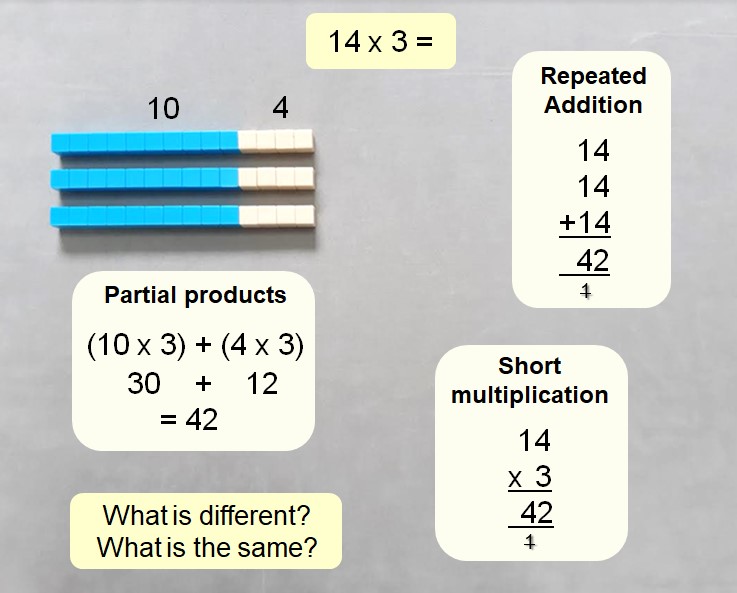Multiplying a 2-digit number by a single digit
When multiplying a 2-digit number by a single digit, we can partition the number into the tens part and the ones and multiply each separately, to find partial products, before adding them together.
To work out 14 x 3, we partition 14 into 10 + 4.
Now we can calculate 10 x 3 = 30 and 4 x 3 = 12.
Then we calculate 30 + 12 = 42, so 14 x 3 = 42.
Multiplication can also be understood as repeated addition, so 14 x 3 is the same as 14 + 14+ 14. This allows column addition to be used to calculate the answer. However, this is not an efficient method when multiplying by a number much larger than 3!
The short multiplication method instead just records the number to be multiplied (the multiplicand) 14, with the multiplier of 3 written beneath. Now instead of calculating 4 + 4 + 4 we are multiplying 4 by 3. This gives us 12, so just as in column addition, we record the 2 and represent the 10 with a 1 under the tens column, ready to be added on. Now we have 1 ten multiplied by 3, which makes 3 tens, plus the extra ten we recorded, so 4 tens altogether.
We can see how all 3 methods involve the same calculations recorded in different formats.

 Facebook
Facebook
 Instagram
Instagram